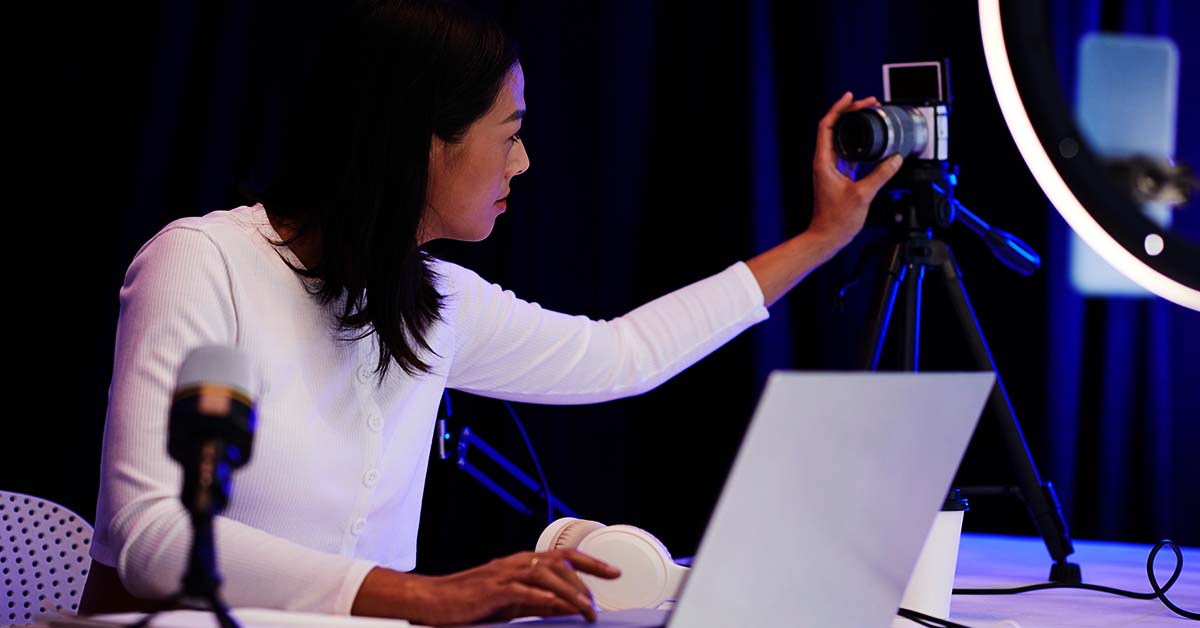Creating compelling content on YouTube goes beyond the technical aspects of filming and editing. One of the most vital yet often overlooked components of successful YouTube videos is on-camera presence. Your ability to connect with viewers through the screen can make or break their decision to continue watching your content. Whether you’re a beginner or looking to sharpen your skills, this comprehensive guide will walk you through best practices to elevate your on-camera presence.
Best Practices for On-Camera Presence
Tips to Improve Your On-Camera Presence, Including Speaking Clearly, Body Language, and Confidence
Why On-Camera Presence Matters
On-camera presence is the combination of how you speak, how you carry yourself, and how confident and authentic you appear to your audience. It’s the intangible quality that makes viewers feel like they’re having a real conversation with you rather than watching someone read a script.
A strong on-camera presence helps:
- Build trust with your audience
- Increase viewer engagement and retention
- Establish your credibility and authority
- Differentiate your content from others
1. Mastering Clear and Confident Speaking
A. Speak Naturally and Clearly
Clarity is king. If your audience struggles to understand you, they won’t stick around. Avoid mumbling, speaking too quickly, or using overly complex language. Practice enunciating your words and keeping a moderate pace.
Tips:
- Use a script or outline, but don’t read it word-for-word.
- Practice your delivery aloud before filming.
- Record test runs and listen for areas to improve.
B. Control Your Tone and Volume
A flat tone can make even exciting content feel dull. Use natural variations in pitch and emphasis to keep things interesting. Likewise, ensure your volume is appropriate and consistent throughout the video.
Tips:
- Imagine you’re speaking to a friend.
- Smile as you speak—it naturally lifts your tone.
- Avoid sounding robotic or overly rehearsed.
C. Eliminate Fillers and Verbal Tics
“Um,” “uh,” and “like” are common fillers that can clutter your speech. While occasional use is normal, excessive fillers distract from your message.
Practice:
- Pause briefly instead of using a filler.
- Rehearse difficult phrases.
- Record yourself and identify repeat verbal habits.
2. Using Body Language Effectively
A. Posture and Positioning
How you physically present yourself on camera communicates confidence and credibility.
Do:
- Sit or stand upright with shoulders relaxed.
- Stay centered in the frame.
- Keep your eyes level with the camera.
Avoid:
- Slouching or leaning too far forward.
- Constant shifting or fidgeting.
B. Gestures and Facial Expressions
Use your hands to emphasize points and facial expressions to convey emotion. However, don’t overdo it. Gestures should feel natural and not staged.
Tips:
- Smile genuinely.
- Use open hand gestures to appear more inviting.
- Match expressions to the tone of what you’re saying.
C. Eye Contact with the Camera
Direct eye contact with the lens creates the feeling of connection. Avoid looking at yourself in the viewfinder or script off-camera.
Tips:
- Treat the camera like it’s a person.
- Use a sticky note with a smiley face near the lens to remind you.
3. Boosting Confidence on Camera
A. Practice Makes Presence
Confidence on camera grows with practice. The more you film yourself, the more comfortable and natural you’ll feel.
Ideas:
- Do short daily video journals.
- Rewatch your videos to assess and adjust.
- Practice reading scripts and delivering impromptu thoughts.
B. Prepare Thoroughly
Preparation reduces nervousness. Knowing your content well lets you focus more on delivery and less on remembering what to say.
Tips:
- Create bullet-point outlines.
- Anticipate questions your audience might have.
- Practice answering them naturally.
C. Dress for Confidence
Wear clothes that make you feel confident and professional but also fit your brand. Avoid overly distracting patterns or colors that might clash on camera.
D. Accept Imperfection
Flubs happen. Don’t let small mistakes shake your confidence. Laugh them off, reset, and move on.
4. Building a Connection with Your Audience
A. Tell Personal Stories
Relatable stories humanize you and build emotional rapport with your viewers. Share moments of struggle, learning, or humor to make your content memorable.
B. Ask Questions and Invite Engagement
Prompt viewers to comment or share their opinions. This increases engagement and builds community.
Examples:
- “Have you ever struggled with on-camera confidence? Share below!”
- “Which tip helped you the most?”
C. Use Names and Direct Address
Use words like “you,” “we,” and “together” to speak directly to the audience.
5. Technical Tips for Enhancing On-Camera Presence
A. Use Proper Lighting and Sound
Even the best speaker can seem unprofessional with poor lighting or bad audio. Ensure your environment supports your message.
Tips:
- Use natural light or soft key lights.
- Minimize background noise.
- Invest in a quality microphone.
B. Frame Yourself Well
Follow the rule of thirds or center yourself depending on the tone of your video. Keep headroom appropriate and avoid awkward angles.
C. Minimize Distractions
A cluttered background, noisy pets, or flashy clothing can distract viewers from your message.
D. Record in a Comfortable Space
Choose a filming space where you feel relaxed and focused. Familiar environments help reduce anxiety and enhance authenticity.
6. Developing Your Unique Style
A. Lean Into Your Personality
Don’t try to copy other creators. Authenticity beats imitation every time. Identify your own strengths and let them shine.
Tips:
- Are you funny? Use humor.
- Are you calm and thoughtful? Lean into that.
- Do you love research? Present data with clarity.
B. Create Consistent Energy
Consistency builds trust. Your viewers will know what to expect and feel more connected to your content.
C. Develop Signature Phrases or Sign-Offs
Create a memorable brand around how you open or close your videos.
7. Common Mistakes and How to Avoid Them
A. Over-Scripting or Under-Preparing
Reading every word feels stiff; winging it leads to rambling. Find a middle ground with structured outlines.
B. Monotone Delivery
Avoid speaking in a flat voice. Vary your tone and use inflection to highlight key points.
C. Over-Editing Your Personality Out
Too many cuts or retakes can strip your video of warmth and authenticity.
D. Ignoring Feedback
Constructive criticism is valuable. Listen to your audience and make tweaks accordingly.
Conclusion: Show Up as Your Best Self
Improving your on-camera presence isn’t about being perfect. It’s about being authentic, confident, and relatable. By focusing on clear communication, effective body language, and building genuine connections, you can elevate your content and grow a loyal audience.
Remember: the more you show up, the better you get. So press record, be yourself, and let your presence shine.
Next Steps:
- Pick one tip to focus on during your next video.
- Rewatch your past content to identify areas to improve.
- Share your favorite on-camera hack in the comments below!
Let your screen presence become your secret weapon in standing out and connecting more deeply with your YouTube audience.







 Edit Your Footage
Edit Your Footage
Leave a Reply